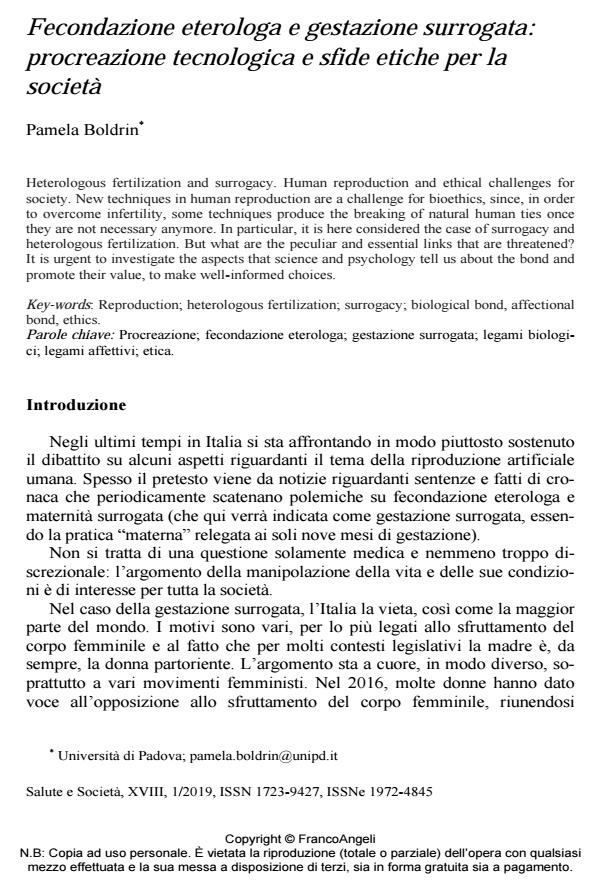Fecondazione eterologa e gestazione surrogata: procreazione tecnologica e sfide etiche per la società
Titolo Rivista SALUTE E SOCIETÀ
Autori/Curatori Pamela Boldrin
Anno di pubblicazione 2019 Fascicolo 2019/1
Lingua Italiano Numero pagine 14 P. 150-163 Dimensione file 211 KB
DOI 10.3280/SES2019-001010
Il DOI è il codice a barre della proprietà intellettuale: per saperne di più
clicca qui
Qui sotto puoi vedere in anteprima la prima pagina di questo articolo.
Se questo articolo ti interessa, lo puoi acquistare (e scaricare in formato pdf) seguendo le facili indicazioni per acquistare il download credit. Acquista Download Credits per scaricare questo Articolo in formato PDF

FrancoAngeli è membro della Publishers International Linking Association, Inc (PILA)associazione indipendente e non profit per facilitare (attraverso i servizi tecnologici implementati da CrossRef.org) l’accesso degli studiosi ai contenuti digitali nelle pubblicazioni professionali e scientifiche
Heterologous fertilization and surrogacy. Human reproduction and ethical challenges for society. New techniques in human reproduction are a challenge for bioethics, since, in order to overcome infertility, some techniques produce the breaking of natural human ties once they are not necessary anymore. In particular, it is here considered the case of surrogacy and heterologous fertilization. But what are the peculiar and essential links that are threatened? It is urgent to investigate the aspects that science and psychology tell us about the bond and promote their value, to make well-informed choices.
Parole chiave:Procreazione; fecondazione eterologa; gestazione surrogata; legami biologici; legami affettivi; etica.
Pamela Boldrin, Fecondazione eterologa e gestazione surrogata: procreazione tecnologica e sfide etiche per la società in "SALUTE E SOCIETÀ" 1/2019, pp 150-163, DOI: 10.3280/SES2019-001010